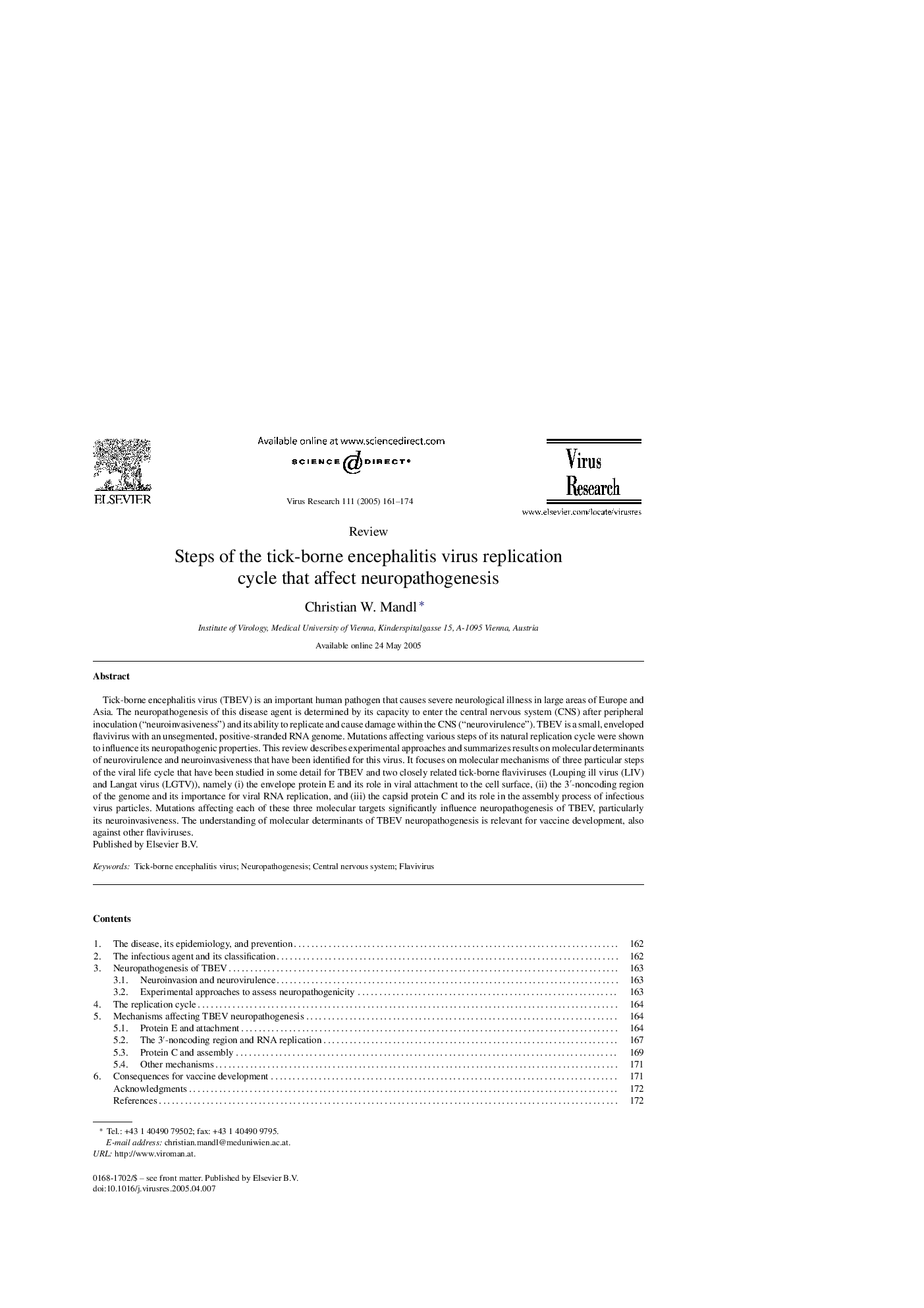| کد مقاله | کد نشریه | سال انتشار | مقاله انگلیسی | نسخه تمام متن |
|---|---|---|---|---|
| 9289253 | 1228298 | 2005 | 14 صفحه PDF | دانلود رایگان |
عنوان انگلیسی مقاله ISI
Steps of the tick-borne encephalitis virus replication cycle that affect neuropathogenesis
دانلود مقاله + سفارش ترجمه
دانلود مقاله ISI انگلیسی
رایگان برای ایرانیان
کلمات کلیدی
موضوعات مرتبط
علوم زیستی و بیوفناوری
ایمنی شناسی و میکروب شناسی
ویروس شناسی
پیش نمایش صفحه اول مقاله

چکیده انگلیسی
Tick-borne encephalitis virus (TBEV) is an important human pathogen that causes severe neurological illness in large areas of Europe and Asia. The neuropathogenesis of this disease agent is determined by its capacity to enter the central nervous system (CNS) after peripheral inoculation (“neuroinvasiveness”) and its ability to replicate and cause damage within the CNS (“neurovirulence”). TBEV is a small, enveloped flavivirus with an unsegmented, positive-stranded RNA genome. Mutations affecting various steps of its natural replication cycle were shown to influence its neuropathogenic properties. This review describes experimental approaches and summarizes results on molecular determinants of neurovirulence and neuroinvasiveness that have been identified for this virus. It focuses on molecular mechanisms of three particular steps of the viral life cycle that have been studied in some detail for TBEV and two closely related tick-borne flaviviruses (Louping ill virus (LIV) and Langat virus (LGTV)), namely (i) the envelope protein E and its role in viral attachment to the cell surface, (ii) the 3â²-noncoding region of the genome and its importance for viral RNA replication, and (iii) the capsid protein C and its role in the assembly process of infectious virus particles. Mutations affecting each of these three molecular targets significantly influence neuropathogenesis of TBEV, particularly its neuroinvasiveness. The understanding of molecular determinants of TBEV neuropathogenesis is relevant for vaccine development, also against other flaviviruses.
ناشر
Database: Elsevier - ScienceDirect (ساینس دایرکت)
Journal: Virus Research - Volume 111, Issue 2, August 2005, Pages 161-174
Journal: Virus Research - Volume 111, Issue 2, August 2005, Pages 161-174
نویسندگان
Christian W. Mandl,